Morocco
Things to Do
Rabat
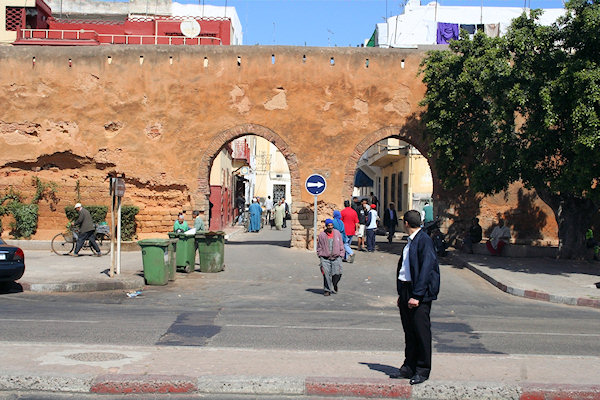 |
|||||
The great walls of Rabat enclose a largely modern city of wide boulevards and
bureaucratic-looking buildings.
But several quarters remain to remind you of Rabat's rich past.
Beside being historical rich, Rabat is - of course - the modern capital, and thus houses monuments and
museums of national importance.
Rabat's relaxed atmosphere is a welcome surprise to most visitors.
Since independence in 1956, Rabat remained the seat of government and home to the king.
Hassan Tower
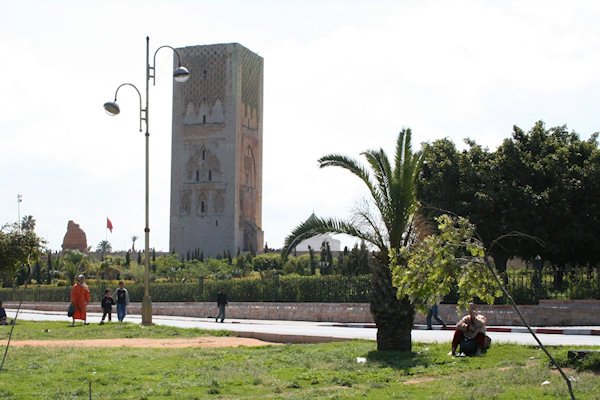 |
|||||
Rabat's most famous landmark, Le Tour Hassa (Hassan Tower) overlooks the bridge across
the Oued Bou Regreg to Salé
The Almohad sultan Yacoub al-Mensour began construction of this enormous minaret in 1195
with the intention of reaching 60m, to make it the largest and highest in the Muslim world.
The project was abandoned at 44m when the sultan died four years later.
The tower still stands but little remains of the adjacent mosque, wich was all but destroyed by an
aerthquake in 1755.
Only the re-erected shatterd pillars testify to the grand plans of Al-Mansour.
Mausoleum of Mohammed V
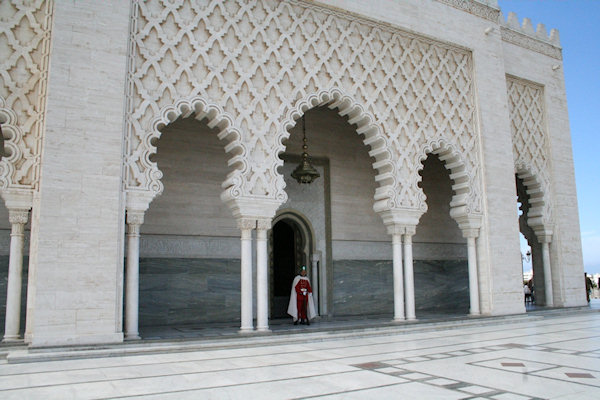 |
|||||
Here the present king's grandfather and father (the late Hassan II) are both laid to rest.
Built in traditional Moroccan style, the mausoleum is richly decorated with zellij mosaics from floor
to ceiling.
The tomb of these kings is located belowe ground in an open chamber.
Above, visitors enter a gallery from with they can see the tomb below.
Visitors must be dressed in a respectful manner.
Kasbah de Oudaias
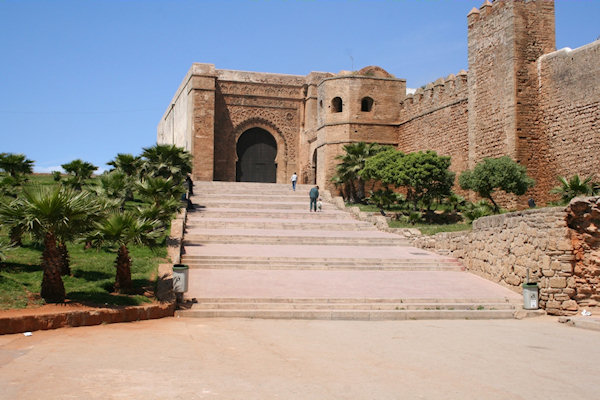 |
|||||
The kasbah sits high up on the bluff overlooking the Oued Bou Regreg-river and the Atlantic Ocean.
The oldest part of the city was strategically placed to observe (and defend against) the comings and
goings of the surrounding area.
The main entry is the enormous Almohad gate Bab Oudaia built in 1195.
Not too much happens on the narrow streets inside the kasbah. But the white-washed houses - most of
which were buildt by Muslim refugees from Spain - and potted plants make it a peacefull and pituresque
place - perfect for a stroll.
The southern corner of the kasbah houses the Andalusian Gardens; laid out by the French during the
colonial period. The formal gardens offer a shady retreat on a summer day and are popular with Moroccan
woman, children and cats.
Chellah
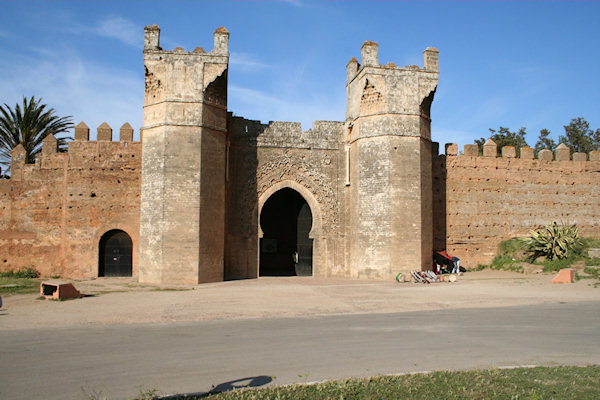 |
|||||
One of Rabat's prettiest and most peaceful corners is the site of the ancient Roman city of
Sala Colonia and the Merenid necropolis of Chellah.
The ruins of the once-thriving Roman outpost are now overgrown with fruit trees and wild flowers. From
the main gate, a path heads down diagonally past fragrant fig, olive, orange and banana trees to a
vieuwing platform, wich overlooks the ruins of the Roman city.
In the 13th century, the Merenid sultan Abou al-Hassan Ali built a necropolis on top of the
Roman site and surrounded it with the defensive wall that stands today.
Today, storks have taken over the Islamic complex, building their nests in every tree and atop the
ruined minaret.
Exiting the mosque complex, the path passes the Tombs of several saints on the far right.
Asilah
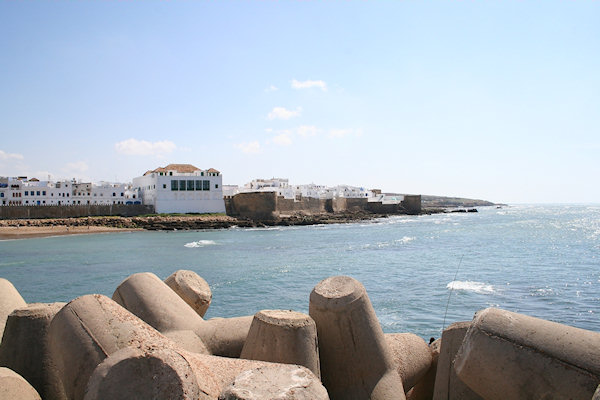 |
|||||
The port off Asilah, 46 km south of Tanger has found its niche as a bijou resort town.
Affluent Moroccans and Europeans - as well as the Moroccan governement - have poured money into
gentrifying houses within the white-washed and mural-painted city walls.
Despite the changes mass tourism has brought, Asilah has managed to retain a certain arty charm and
it remains one of the gems of the North Atlantic coast.
Small it me be, but for over two millennia Ashilah has had a tumeultuos history.
The first settlers were the Carthaginians, who named th port Zilis.
In 1471 Ahilah was captured by the Portugese, who built the walls that still surround the medina.
In 1578 King Dom Sebastian of Portugal chose Ashilah as the base for an ill-fated crusade,
which resulted in his death and the subsequent passing of Portugal (and its Moroccan possessions) into
the hands of the Spanish.
Asilah was captured by the Moroccans in 1589, lost to the Spanish and recaptured by Moulay Ismail
in 1691.
Tangier
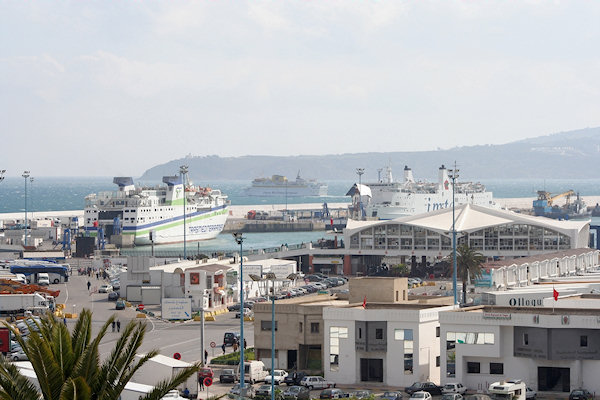 |
|||||
Tangier has been covented for millennia as a strategic site commanding the Stait of Gibraltar; its
port has been one of the most contested in the Mediterranean. The area was settled by the ancient Greeks
and Phoenicians, for whom it was a trading base.
The Arabs arrived in 705. Once they had established their supremacy over the indigenous Berber tribes,
they passed Tangier between various factions before it eventually came under Almohad rule in 1149.
The Portugese captured Tangier on their second attemp in 1471. For the next 200 years, the city was
passed between Portugal, Spain and England as a political booty.
Moulay Ismail besieged Tangier in 1679, causing the European powers to abandon it, but not before
destroying the port and much of the city.
Tangier is an unique city - hardley truly Moroccan, nor European, nor even African. It defies
catagorisation, which is precisely why it is so appealing.
Hotel Continental
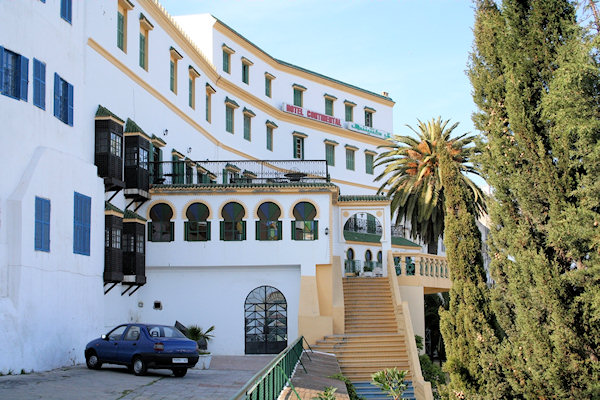 |
|||||
Perched above the port, the historic Hotel Continental is the place to stay for a night in
Tangier.
This charming eccentric hotel is a little ragged around the edges, but the rooms and common areas are
gradually being redecorated.
Sevice is friendly, and the terrace is a fabulous place to sip a cold drink, and watch the activity of
the port.
This colonial classic was used for some senes in the film of Paul Bowels' book The Sheltering Sky
Cap Spartel
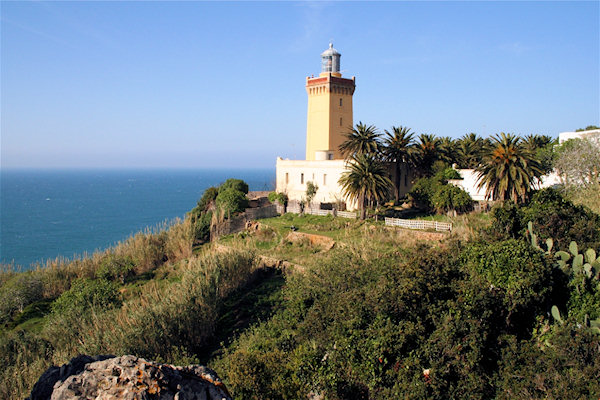 |
|||||
Just 14 km west of Tanger lies Cap Spartel, the Northwestern extremity of Africa's Atlantic
coast, marked by a lighthouse and fish reataurant.
Below Cap spartel, the beach Plage Robinson
Five kilometres along here you reach the Grottes d'Hercule, next to the Mirage hotel.
Mythically, these caves were the dwelling place fot Hercules when he mightily seperated Europe from
Africa.
It's worth paying the small entrance fee for a much photographed view of the Atlantic from one of
the openings.
Tetouan
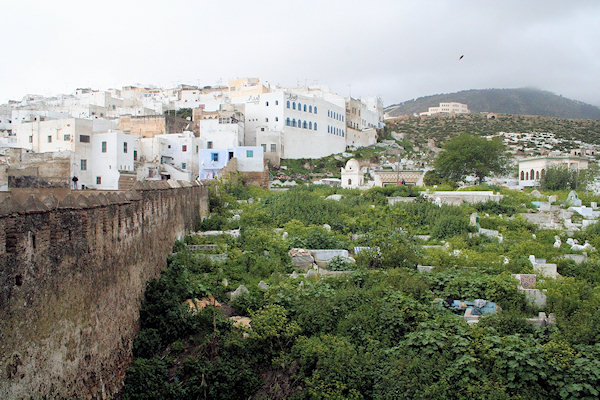 |
|||||
Tetouan owes its quite unique Hispano-Moroccan atmosphere to its more than 40 years (1912-1956) as
the capital of the Spanish protectorate.
The medina, a conglomeration of whitewashed and tiled buildings set against the brooding Rif Mountains,
shows off this Andalucian heritage.
The 'modern' ville nouvelle contains some glorious examples of Spanish colonial architecture.
Around here you'll find the hotels, banks and most of the restaurants.
`Tetouan's ancient predecessor is Tamuda, a Mauritanian city that was founded in the 3rd century BC,
but destroyed in the 1st century AD following a local revolt.
In the 14th century the Merenids established the town of Tetouan as a base from which to control
rebellious Rif tribes, but it was destroyed by Henry III of Castille in 1399.
Moulay Ismail built Tetouan's defensive walls in the 17th century, and the town's trade links with
Spain improved and developed.
In 1913 the Spanish made Tetouan the capital of their protectorate, which was abandoned only in 1956
when Morocco regained independence.